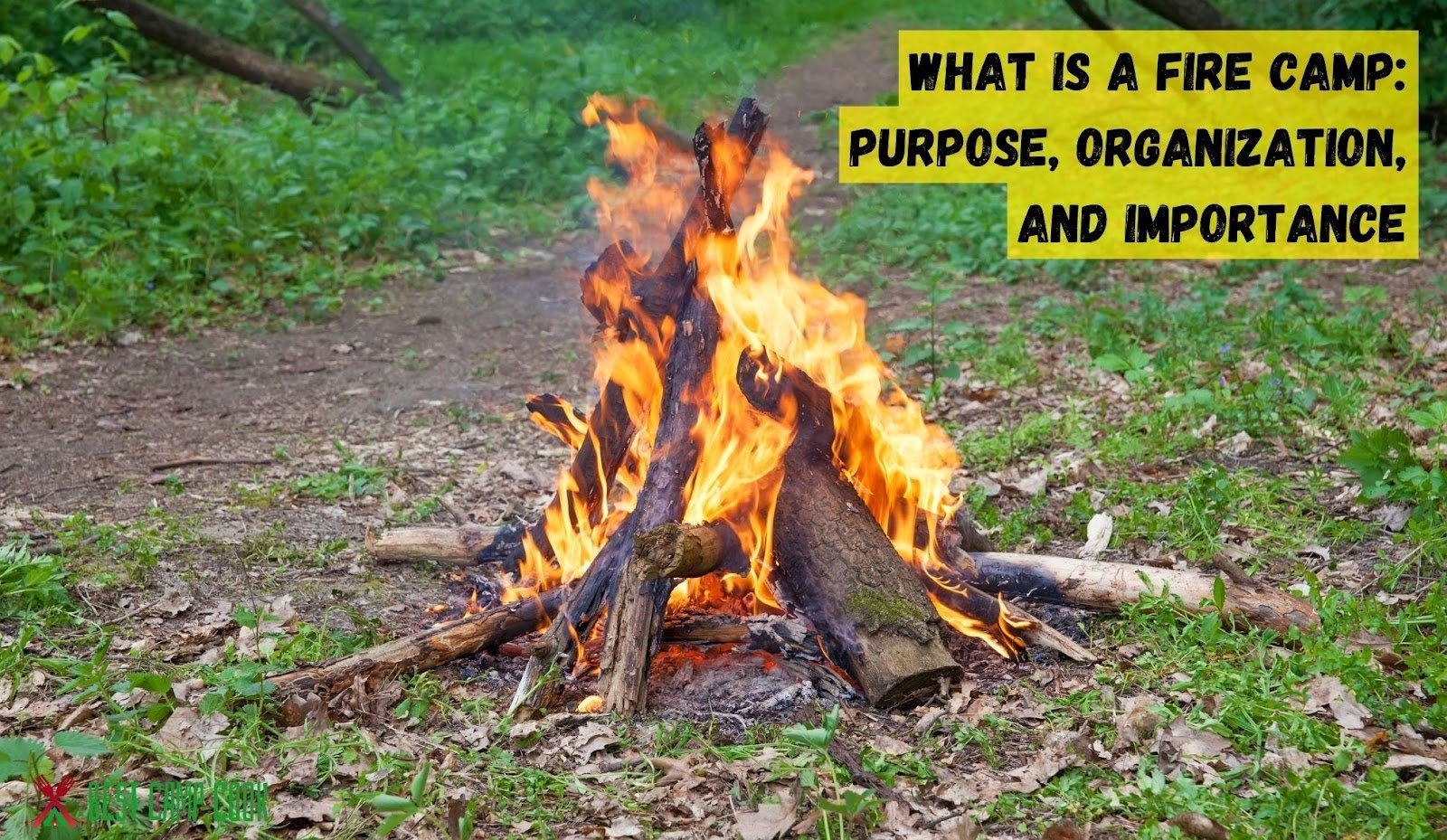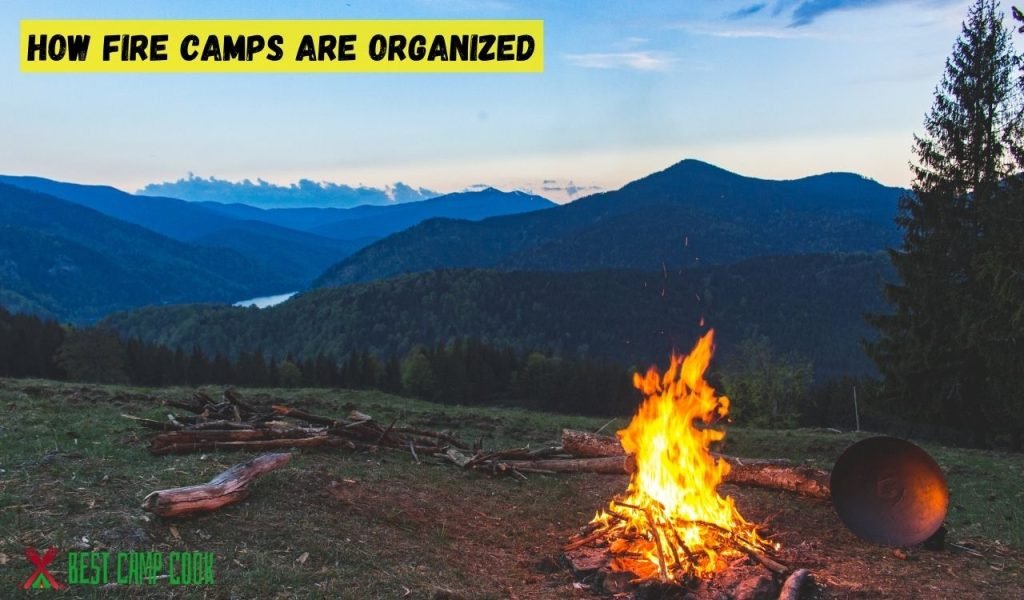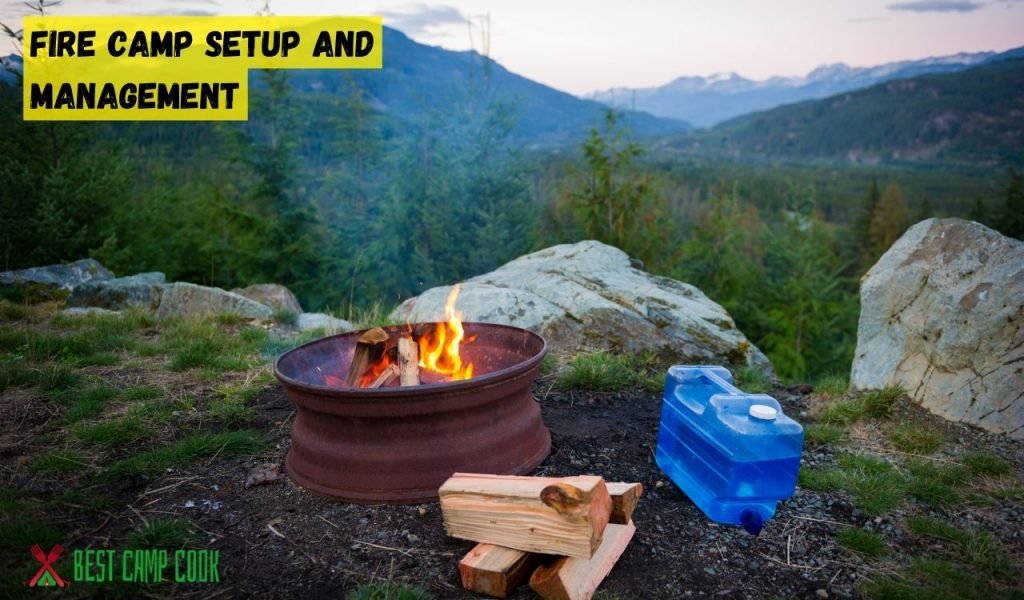Physical Address
304 North Cardinal St.
Dorchester Center, MA 02124
Physical Address
304 North Cardinal St.
Dorchester Center, MA 02124

What is a fire camp? If you’ve ever pondered this question, you’re in for an insightful journey. Fire camps are more than just temporary installations; they’re dynamic hubs of action, resilience, and support. Whether they’re battling raging wildfires or enhancing the outdoor event experience, these camps play a vital role in diverse situations.
In this guide, we’ll unravel the secrets of fire camps, their functions, and why they matter. So, if you’re ready to discover the heart of these temporary marvels, let’s dive right in!
Main Summary: What is a Fire Camp?
A fire camp is a vital operational hub for wildfire management. It’s a temporary site near wildfires, offering shelter, sustenance, and supplies to firefighters. These camps enhance response efficiency, ensuring firefighters’ safety and facilitating coordinated efforts in battling wildfires.
Imagine a remote area engulfed in a wildfire, or a bustling outdoor event in the heart of nowhere – both scenarios where fire camps come into play. At its core, a fire camp is a temporary site set up to serve a specific purpose, be it combating wildfires, facilitating disaster relief efforts, or supporting large gatherings like music festivals or sporting events.
Fire camps, often the unsung heroes in times of crisis, are temporary installations designed to serve various critical purposes. Let’s delve into the essence of fire camps:
At its core, a fire camp is a transient hub created to fulfill a specific mission. These missions can vary widely, spanning from wildfire suppression to disaster response and outdoor event support. Here’s a closer look:
In the face of raging wildfires, these camps emerge as strategic bases for firefighters and emergency personnel. They serve as the frontlines in the battle against the fury of nature.
When natural disasters like hurricanes, floods, or earthquakes strike, disaster relief camps become lifelines. They offer shelter, sustenance, medical aid, and a glimmer of hope to affected individuals and communities.
On a more cheerful note, event and festival camps come to life during music festivals, outdoor exhibitions, and sporting events. They provide attendees with a unique communal experience, allowing them to immerse themselves in the great outdoors.
Now that we’ve got a basic grasp of what fire camps are, let’s explore the diverse world of fire camp types:
In the wild, where flames dance menacingly, wildfire suppression camps emerge as a crucial battleground. These camps serve as strategic bases for firefighters and other personnel fighting relentlessly to tame the raging inferno. Think of them as the frontlines in the battle against nature’s fury.
When disaster strikes, disaster relief camps are the saving grace. These temporary installations provide shelter, food, and essential supplies to those affected by calamities such as hurricanes, floods, or earthquakes. They offer hope and support during the darkest hours.
On a lighter note, event and festival camps cater to enthusiasts seeking adventure and fun. These camps pop up during music festivals, outdoor exhibitions, and sports events, offering a communal experience for attendees who want to revel in the great outdoors.

Fire camps aren’t just tents and campfires; they’re intricate ecosystems with specific functions:
In times of crisis, effective communication and coordination are paramount. Fire camps serve as central hubs where incident commanders, firefighters, and support staff converge to strategize and manage resources efficiently.
For firefighters battling wildfires or disaster relief workers aiding affected communities, a place to rest is essential. Fire camps provide temporary lodging, ensuring these heroes stay well-rested and ready for action.
In the midst of chaos, nourishment is vital. Fire camps house kitchens and dining areas to provide meals for the hardworking individuals on the frontlines.
From firefighting equipment to medical supplies and humanitarian aid, fire camps stockpile essential resources to ensure operations run smoothly.
Behind every operation, there’s a mountain of paperwork. Fire camps host administrative offices to manage logistics, personnel, and documentation.
Now, let’s take a closer look at the facilities and services that make fire camps operational powerhouses:
Temporary sleeping arrangements are a staple of fire camps. Tents provide a place for firefighters, volunteers, and disaster relief workers to rest and regroup.
Maintaining hygiene is crucial, especially in disaster-stricken areas. Fire camps include shower and restroom facilities to ensure cleanliness and sanitation.
From hearty meals to snacks and beverages, on-site catering services keep everyone fueled and energized for their tasks.
Injuries and illnesses are occupational hazards in high-stress environments. Fire camps have medical stations staffed with healthcare professionals to provide immediate care.
Modern fire camps are equipped with advanced communication systems, enabling real-time information exchange and coordination.
Safety is paramount. Fire camps have security personnel and protocols in place to safeguard their residents and resources.

The efficient organization of fire camps is essential to their success in responding to emergencies and supporting outdoor events. These temporary installations require meticulous planning and coordination. Let’s explore How to start a fire when camping:
Fire camps are typically divided into various zones, each with a specific function:
This zone serves as the nerve center of the camp. It is where incident commanders, firefighters, and essential personnel gather. The operations zone houses command centers, communication hubs, and strategic planning areas.
In the logistics zone, you’ll find crucial warehouses stocked with firefighting equipment, medical supplies, and other essential resources. It’s a bustling area where inventory management is crucial to ensure that necessary supplies are readily available.
Firefighters and support staff need a place to rest and regroup. The accommodation zone features rows of tents or sleeping quarters, ensuring that everyone gets a well-deserved break and can rest between missions.
Meals are a vital part of camp life. Fire camps have dedicated dining areas or mess halls where nutritious food is served to keep everyone energized and foster a sense of community.
Maintaining hygiene is essential, especially in disaster-stricken areas. This zone includes shower and restroom facilities to ensure cleanliness and sanitation.
Efficient resource allocation is fundamental in fire camp organization:
Roles and responsibilities are clearly defined within the camp. Incident commanders, firefighters, medical personnel, and administrative staff all have specific tasks and chains of command, ensuring that everyone knows their role in the operation.
Fire camps are stocked with firefighting equipment, from hoses and tools to specialized vehicles. Ensuring the right tools are in the right place at the right time is crucial for a swift response.
From food to medical supplies, a well-organized supply chain keeps resources flowing smoothly. Inventory is tracked to prevent shortages, and resupply efforts are coordinated effectively.

The setup and management of fire camps require a well-coordinated effort from start to finish. Let’s explore the key aspects of establishing and maintaining these essential installations:
Selecting the right location for a fire camp is a critical first step. Considerations include proximity to the incident, accessibility, safety from the threat of fire or other hazards, and the potential environmental impact.
Once the site is chosen, it’s time to set up the infrastructure:
Tents are erected to provide accommodations and workspace. They vary in size, with some serving as sleeping quarters and others as command centers or offices. The proper setup of tents is essential for the comfort and functionality of the camp.
Utilities such as power generators, water sources, and sewage facilities are established to ensure a comfortable and functional camp. These utilities support the basic needs of camp residents and personnel.
Efficient camp management relies on effective administrative procedures:
All activities, resources, and personnel are meticulously documented to maintain clarity and accountability. Proper record-keeping is crucial for tracking resources and activities within the camp.
Communication systems are established to facilitate real-time information exchange among all parties involved. Reliable communication ensures that incident commanders and personnel are always informed and can respond effectively to changing situations.
Managing resources and logistics is a continuous effort:
Resources are distributed to the right zones and personnel as needed, following a well-defined plan. Proper distribution ensures that firefighting equipment, medical supplies, and other essential resources are readily available where they are needed most.
Inventory is monitored closely to prevent shortages and ensure that essential supplies are readily available. Keeping a tight grip on inventory helps prevent disruptions in operations.
Efficiency is the key to the successful operation of fire camps. These temporary installations must run like well-oiled machines to respond effectively to emergencies and support outdoor events. Let’s delve into the strategies and practices that ensure fire camps run smoothly:
Efficient management begins at the top:
Clear leadership is essential in a fire camp. Incident commanders provide direction, make critical decisions, and coordinate all activities within the camp. They ensure that everyone understands their roles and responsibilities.
A well-structured chain of command is established to maintain order and accountability. Personnel know who to report to and how to escalate issues when necessary.
Open lines of communication are vital. Reliable communication systems, such as radios or digital networks, are in place to facilitate real-time information exchange. This ensures that incident commanders and personnel are always informed and can respond effectively to changing situations.
Efficiently managing resources is central to the success of a fire camp:
Resources are allocated based on real-time needs. This includes firefighting equipment, medical supplies, food, water, and shelter. The goal is to prevent waste while ensuring that essential resources are readily available where they are needed most.
Streamlined logistics are crucial. Supply chain management is optimized to reduce downtime and increase effectiveness. The efficient deployment of equipment and personnel ensures that resources are where they need to be, when they need to be there.
Inventory is monitored closely to prevent shortages. Accurate record-keeping helps track the availability of resources and prevents disruptions in operations.
Safety is paramount in fire camp management:
Personnel receive comprehensive safety training. This includes fire prevention measures, first aid, and evacuation procedures. Training ensures that camp residents and personnel can respond to emergencies safely.
Procedures for responding to emergencies are established and practiced regularly. These procedures cover various scenarios, from medical emergencies to hazardous incidents. Well-defined emergency response plans are critical for handling unexpected situations effectively.
Environmental protection is a priority. Fire camps are often set up in sensitive ecosystems, and protocols are in place to minimize their environmental impact. This includes proper waste disposal, fuel containment, and adherence to local regulations.
Efficient fire camp management is an ongoing process:
Camp operations are regularly evaluated to identify areas for improvement. Incident commanders and camp administrators conduct post-incident reviews to assess what worked well and what can be enhanced.
Fire camp management must be adaptable. Plans and procedures are updated based on lessons learned from previous operations. This ensures that the camp remains effective in responding to evolving challenges.
Personnel are encouraged to participate in ongoing training and professional development. This ensures that they stay up-to-date with the latest techniques and technologies in firefighting and emergency response.
Safety and environmental protection are foundational principles in fire camp operations. These protocols and considerations are essential to ensure the well-being of personnel and the preservation of the surrounding environment:
Personnel undergo rigorous safety training, including fire prevention measures, proper handling of equipment, and emergency response procedures. Training ensures that everyone is prepared to handle potentially hazardous situations safely.
The use of PPE is strictly enforced. Firefighters and camp staff are equipped with appropriate gear, including flame-resistant clothing, helmets, gloves, and respiratory protection. This equipment minimizes the risk of injury and exposure to hazardous materials.
Regular emergency drills are conducted to ensure that all personnel are familiar with evacuation procedures and emergency response protocols. These drills help maintain readiness for unexpected situations.
Careful consideration is given to the selection of campsite locations. Sites are chosen to minimize their impact on sensitive ecosystems and natural habitats. Proximity to water sources and accessibility are also factors in site selection.
Strict waste management protocols are in place. Camps have designated areas for waste disposal, including recycling and hazardous materials. Proper waste containment and disposal prevent environmental contamination.
Given the nature of fire camps, the risk of wildfires is a concern. Camps implement fire prevention measures, including controlled burns to create firebreaks and reduce fuel loads. Fuel storage areas are also carefully managed to prevent accidental fires.
Fire camps adhere to local and federal environmental regulations. Compliance with these regulations ensures that camp operations are in harmony with environmental preservation efforts.
Some fire camps take sustainability initiatives seriously. These may include:
Efforts are made to reduce energy consumption through the use of efficient generators and lighting systems. Solar power and other renewable energy sources are explored where feasible.
Water conservation measures are implemented to minimize the camp’s impact on local water sources. This includes using water-saving fixtures and recycling water How to clean camping water containers where possible.
Special attention is given to protecting local wildlife. Camps often have protocols in place to minimize disturbances to animal habitats and ecosystems.
In conclusion, “What is a Fire Camp” is not just a question; it’s an introduction to a world of resilience, coordination, and support. Whether aiding in the battle against wildfires, providing relief in times of disaster, or enhancing the experience at outdoor events, fire camps are versatile and vital. Their temporary nature, adaptability, and central role in emergencies highlight their significance.
As we’ve delved into the functions, amenities, and importance of fire camps, we recognize that they are more than temporary installations; they are symbols of human determination and collaboration in the face of challenges. Understanding fire camps is understanding the heart and soul of effective emergency response.
A fire camp is a temporary facility set up during emergencies, such as wildfires or natural disasters. It serves as a central hub for coordinating response efforts, providing accommodations, resources, and support to personnel involved in firefighting, disaster relief, and outdoor events.
Fire camps are essential during wildfires because they provide a strategic base for incident commanders and firefighters to plan, coordinate, and deploy resources effectively. They offer a place for rest, sustenance, and logistics, enabling more efficient wildfire suppression efforts.
No, fire camps are versatile and serve multiple purposes. While they primarily support firefighters, they also provide accommodations and services to disaster relief teams and outdoor event attendees. Their functions can vary based on the specific mission.
Fire camps offer various amenities to meet the needs of personnel and event attendees. These include sleeping quarters, dining facilities, resource warehouses, administrative support, and hygiene facilities. The amenities provided can vary depending on the camp’s purpose and size.
No, fire camps are not permanent. They are temporary facilities set up for specific missions, such as emergency response or outdoor events. Once the mission is completed, fire camps are dismantled and removed.
Efforts are made to minimize the environmental impact of fire camps. They often follow protocols for waste disposal, fuel containment, and adherence to environmental regulations to protect local ecosystems.
Campfire temperatures can vary, but they typically range from 1,000 to 1,200 degrees Celsius (1,800 to 2,200 degrees Fahrenheit). The temperature depends on factors like the type of wood, airflow, and the fire’s size.
Campfires can produce toxic gases and particles, especially if materials like plastics, chemicals, or treated wood are burned. Inhaling these toxins can be harmful. It’s essential to use proper ventilation and burn only safe materials when having a campfire.